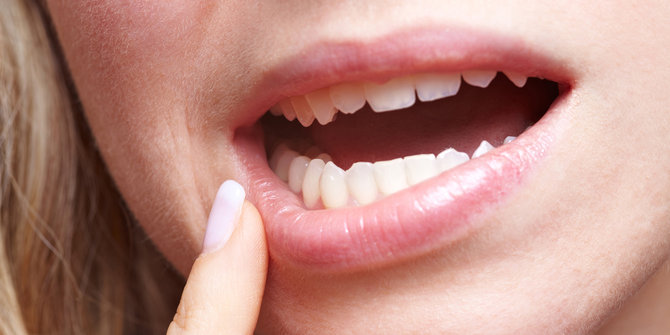Oral cancer or in medical language is referred to as oral squamous cell carcinoma is a cancer that occurs in the oral cavity with causes unknown yet. In general, oral cancer has 90% incidence rate. Oral cancer is ranked sixth compared to cancer in other parts of the body. This cancer is mostly found in adults and older people with manifestations or clinical conditions in the form of canker sores that do not heal. They show symptom like white necrotic tissue surrounded by curled boundaries.
Smoking is believed to be one of the risk factors of oral cancer. When someone smokes, the inhaled smoke contains various chemical compounds. This cigarette smoke is a free radical. Free radicals are reactive oxygen compounds which are unpaired electrons.
The compound or atom is trying to reach a stable state by attracting other electrons to form new radicals. Free radicals will damage the molecules whose electrons are attracted by these free radicals, causing cell damage, impaired cell function, and even cell death. The main molecules in the body damaged by free radicals are DNA, fat and protein. Cells that are damaged by free radicals will be disrupted their metabolism, it stimulates cell DNA mutation, which results in cancer and even death.
However, it cannot be denied that there are other supporting factors or predisposing factors, such as environmental factors like prolonged exposure to sunlight with high intensity. Epidemiologically, men are more susceptible to oral cancer than women with a ratio of 1.5: 1.
One of the oral cancer patients at RSGM Universitas Airlangga was a man, aged 63 years, working as a farmer with complaints of canker sores under the tongue for five weeks. They started from a bite by the back teeth and kept getting bigger and bigger, accompanied by pain, itching and stiffness. During gurgling, the patient felt a burning sensation. After a more detailed examination in the Department of Oral Medicine, a diagnosis of oral squamous cell carcinoma was made.
How can mouth cancer occur in a farmer?
Oral cancer in this patient can be caused by two factors, sun exposure and the use of pesticides. Exposure to sunlight with high intensity and frequency can trigger cell changes in the oral cavity leading to the formation of oral cancer.
Every day, our skin is exposed to sunlight. Without realizing it, there is also radiation from the ultraviolet rays. Ultraviolet ray can penetrate the outer skin layer and into the deeper layers of the skin, so it can cause DNA damage to skin and lips’ cells.
DNA damage that is too severe can cause changes in cell properties and the process of apoptosis is disrupted, one of them is the failure of caspsae 3 activation which is the main key of apoptosis. Failure of apoptosis causes cells to change properties and become cancerous. This risk can be reduced by sunscreen, hats or masks that cover the lips and mouth area.
Another factor that is likely to play a role in causing cancer in these patients is the use of pesticides used to control pests. The main ingredient in pesticides is imidaclorpid (IMI), which has been used since 1991 as an insecticide.
There are no studies related to the relationship between IMI exposure and oral cancer in the agricultural environment, but some references report that IMI exposure can cause changes in the formation of epithelial cells, activate TNF-α and disrupt caspase 3. Carcinogenic processes in humans are activated by TNF-α activation followed by failure of apoptosis with caspase 3 disturbance indicators and continuous exposure to IMI can cause mutagenic and carcinogenic effects.
Most pesticides are used by spraying. Particles or pesticides will be inhaled directly on the lips, oral cavity or respiratory tract. If there is no self-protection effort, the risk of exposure to pesticides for the emergence of oral cancer can also occur.
Thus it can be concluded that farmers in agricultural environment are also at risk to oral cancer due to exposure to sunlight and pesticides. Continuous exposure to sunlight and pesticides can cause oral cancer even though, in this case, there is no history of smoking and alcohol consumption. As of today, there are no epidemiological studies in the agricultural environment in Indonesia that are related to the prevalence of cancer in the oral cavity. (*)
Authors: Herlambang Devianto, Titis Desiandrin, Desiana Radithia, Dwi Hari Susilo, and Alphania Rahniayu
Details of this case report available at
https://actamedicaphilippina.upm.edu.ph/index.php/acta/article/view/85





